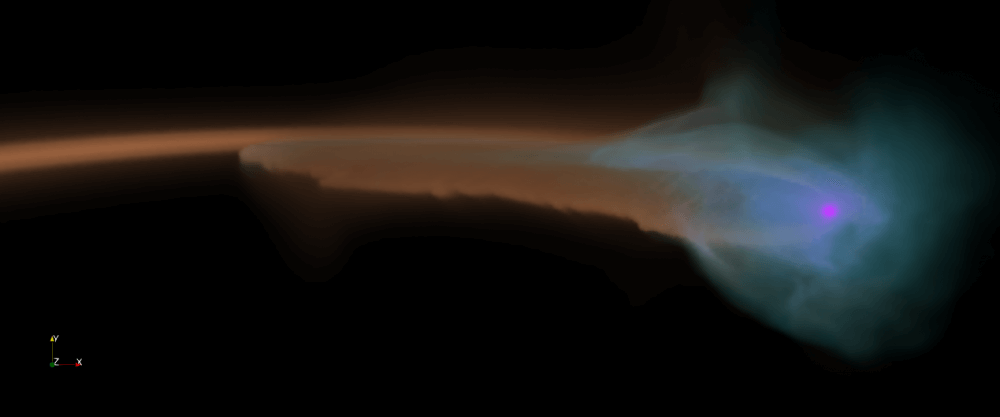A joint study by a pair of researchers from the Hebrew University and Arizona presents a new way to discover the location of medium-sized black holes in the universe. With the help of a reanalysis of X-ray data and observations, the researchers were able to measure for the first time the speed at which the medium-sized black hole rotates, creating an opening for further discoveries and research in the field

In 2020, the Nobel Prize in Physics was awarded to two astronomical observers who discovered a supermassive black hole at the center of the Milky Way, the center of our galaxy. These enormous masses, ranging from one million to ten billion times the mass of our Sun, become a powerful source of electromagnetic radiation. However, little is known about the existence of medium-sized black holes, which are at the center of galaxies smaller than the Milky Way. Now, for the first time, new information is revealed about those medium-sized black holes - how they can be discovered, what their rotation speed is and how this affects the future of particle physics.
A new study of Dr. Nicholas Stone from the Rekh Institute of Physics at the Hebrew University and Dr. Shiasing Wen from the University of Arizona, which he published in the scientific magazine The Astrophysical Journal (which presents new developments, discoveries and theories in the fields of astronomy and astrophysics), Reveals these details with the help of newly collected data and innovative observations. The article is based on the flash created by the encounter between a star and a medium-sized black hole with a mass of about ten thousand solar masses, which was named "J2150" and is about a billion light-years away from Earth. The destruction of a star by a black hole is called a "tidal disruption event". Dozens of such events have been seen in the centers of galaxies with supermassive black holes, and only a handful have been seen in the centers of small galaxies that can host intermediate black holes.
A flash with a unique seal
To date, observational information has not been sufficient to establish that such a flash was produced by a medium-sized black hole. Using a reanalysis of the information from the X-ray flash of J2150, and fitting a more sophisticated theoretical model, the researchers were able to show that the origin of the flash is indeed from the encounter of a star with a medium-sized black hole, thus creating an opening for the discovery of other medium-sized black holes of the same shape.
In addition, For the first time, the researchers were able to measure the rotation speed of that black hole and discovered that its rotation speed is higher than expected, and stands at a spin of 0.8 (in an index between 0 and 1). This result may have important consequences for particle physics and in particular for the popular theory that dark matter is made of very light particles (ultralight dark matter), which is why they have not been able to detect them in laboratory experiments to date. If these particles really exist, they will interact with the black hole and the energy of its rotation will turn into a cloud of particles and the black hole will slow its movement over time. "Therefore, the observation of a black hole rotating at this speed can rule out the existence of various types of dark matter, and the measurement of the spin of that black hole rules out a new mass range of these particles," states the researcher.
Dr. Stone added and said that "If most dwarf galaxies contain medium-sized black holes, then mostTidal disruption events will appear in such galaxies. By fitting the flashes of X-ray radiation to these theoretical models, it will be possible in the future to conduct a 'census' of medium-sized black holes in the universe, after more events of this type are detected."
More of the topic in Hayadan:
